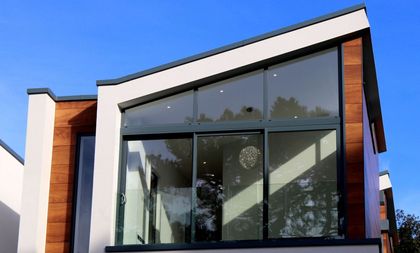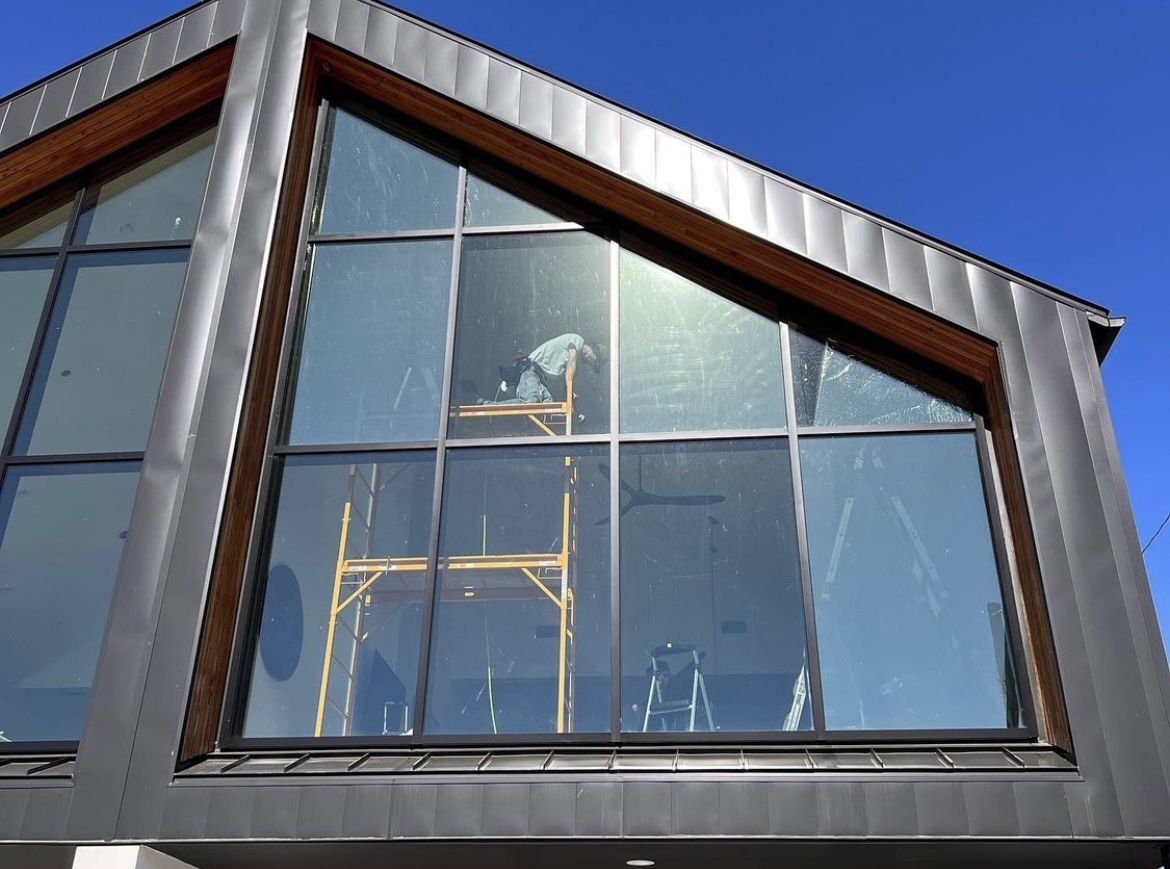Residential Window Tint: Improve Comfort and Minimize Glow Indoors
Residential Window Tint: Improve Comfort and Minimize Glow Indoors
Blog Article
How Residential Home Window Tinting Improves Your Home's Power Effectiveness
Residential home window tinting presents a compelling remedy for home owners looking for to enhance energy effectiveness within their living rooms. By using specialized movies to windows, it properly reduces warm transfer, consequently supporting interior temperatures and lessening the demand for too much home heating or air conditioning.
Understanding Window Tinting
Understanding window tinting is crucial for homeowners looking for to boost both convenience and power performance in their home. Residential Window Tint. Home window tinting involves the application of a thin movie to the inside or outside surface area of glass home windows. This movie can substantially regulate the amount of sunlight and heat that enters a home, thus influencing interior environment problems
There are various kinds of window tinting films available, each with distinctive residential or commercial properties. Colored films absorb solar power, while reflective films deflect it away from the glass surface. Ceramic movies offer an equilibrium of presence and warm being rejected, making them a popular selection amongst property owners. The efficiency of window tinting is usually gauged by its Visible Light Transmission (VLT) percentage, which indicates just how much light can travel through the film.
Benefits of Power Efficiency
Home window tinting not only improves aesthetic appeals but additionally plays a significant duty in improving power effectiveness within household areas. By lowering warm transfer via windows, colored movies produce an extra steady interior climate, which can cause significant decreases in power consumption for cooling and heating. This energy performance translates right into lower energy bills, supplying property owners with significant long-term cost savings.

Furthermore, home window tinting boosts the comfort of living spaces. By decreasing glow and blocking harmful UV rays, colored home windows develop an even more enjoyable setting, which can cause improved health for passengers. The protection versus UV rays also aids preserve furnishings and flooring from fading, adding to the durability of household products.
Just How Tinting Works
Tinting movies operate via a combination of innovative materials and modern technologies developed to regulate the amount of solar power entering a home. Mostly composed of polyester, these films usually integrate ceramic or metallic bits that reflect and take in warm. This twin ability permits them to significantly minimize the infiltration of ultraviolet (UV) rays and infrared radiation while permitting noticeable light to pass through.
The efficiency of home window tinting is determined by its solar warmth gain coefficient (SHGC), which indicates just how much solar power is transmitted with the home window. Lower SHGC values are better as they denote higher warmth denial. Additionally, window colors can include a variety of shades, enabling home owners to customize their aesthetic choices while boosting energy effectiveness.
In addition, these movies act as a barrier, stopping warmth loss throughout colder months by reflecting interior warmth back right into the home. This thermal insulation effect matches the cooling benefits obtained throughout warmer months, adding to a balanced indoor climate year-round. By managing solar power efficiently, property home window tinting not just improves comfort however likewise plays a crucial function in minimizing energy usage and reducing utility bills.
Choosing the Right Color

There are various types of window movies readily available, consisting of colored, metalized, and ceramic. Ceramic movies provide outstanding warm control without jeopardizing presence and are very sturdy, making them a prominent choice.
Noticeable light transmission (VLT) is one more critical variable, as it indicates the amount of natural light that can go through the colored glass. Homeowners should select a tint with a VLT that complements their lighting choices while see post still providing adequate glow decrease.
In addition, analyzing the solar warmth gain coefficient (SHGC) can aid establish just how well a color can block heat from sunlight. A reduced SHGC shows much better warm control, ultimately enhancing power performance.
Installation and Upkeep Tips
Appropriate installation and upkeep are crucial elements in taking full advantage of the benefits of household window tinting. To achieve optimum results, it is advisable to work with a qualified specialist for setup. This ensures that the color is applied appropriately, preventing air bubbles, creases, or misalignment that can jeopardize efficiency. Experts additionally utilize specialized techniques and devices, which can enhance the toughness and efficiency of the color.
Adhering to installation, upkeep is necessary to extend the life of the home window film. It is recommended to wait a minimum of 30 days before cleansing the colored try these out windows to enable Visit This Link the sticky to cure fully. When cleansing, use a soft towel and a mild, ammonia-free cleaner to avoid damaging the film. Prevent unpleasant products that can scratch the surface.
Furthermore, routine examinations are beneficial. Look for any peeling or bubbling, which could indicate improper installation or wear over time - Residential Window Tint. Dealing with these issues quickly can avoid further damage and maintain power performance. By sticking to these installment and upkeep ideas, house owners can ensure their window tinting remains to provide substantial power financial savings and comfort for many years to come.
Final Thought
In conclusion, residential home window tinting serves as an efficient remedy for improving power efficiency within homes. By minimizing heat transfer and blocking harmful UV rays, window movies add to lower power intake and improved interior convenience.
Home window tinting involves the application of a slim film to the interior or exterior surface of glass home windows. By minimizing warm transfer with windows, colored movies develop a much more secure interior environment, which can lead to significant reductions in power consumption for home heating and air conditioning.The performance of window tinting is measured by its solar warm gain coefficient (SHGC), which suggests just how much solar energy is transferred with the home window. By taking care of solar power properly, domestic home window tinting not just boosts convenience yet additionally plays a vital role in minimizing power intake and decreasing energy expenses.
By minimizing warm transfer and obstructing harmful UV rays, window movies add to decrease power consumption and enhanced indoor comfort.
Report this page